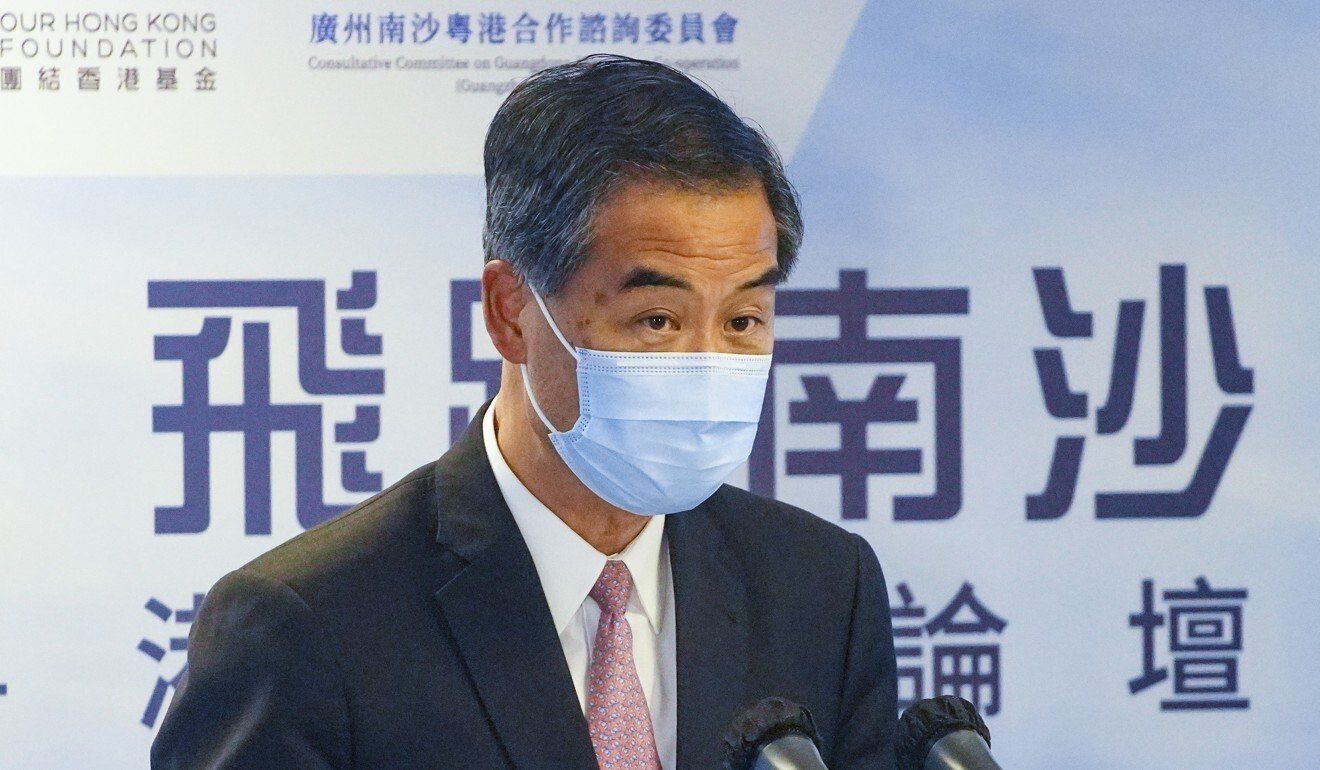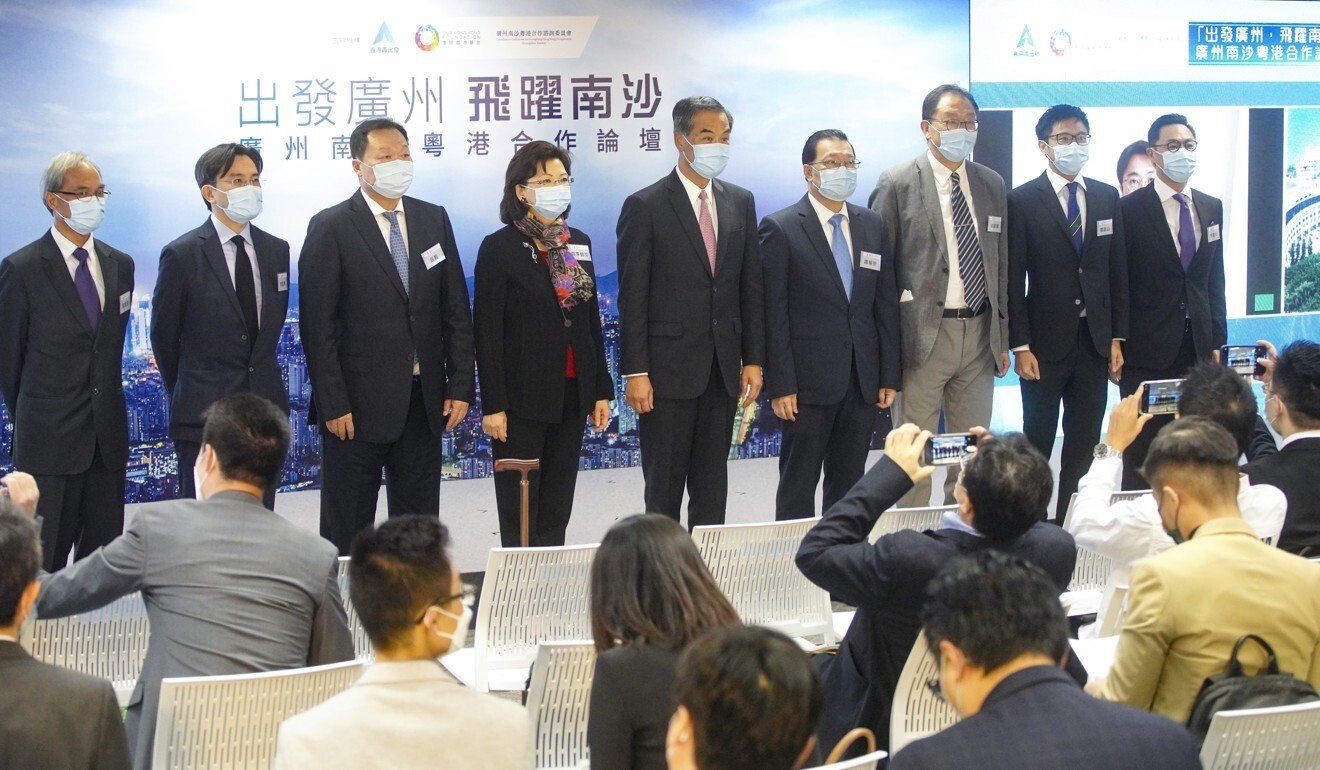Hong Kong News

Hong Kong and mainland China officials eye greater cooperation on Nansha
Senior officials from Hong Kong and mainland China called for more collaboration on Friday, as they identified Guangzhou’s Nansha district as a key platform for the sides to work together on health tech, shipping, as well building a new community with public and transport facilities.
Financial Secretary Paul Chan Mo-po, speaking at a high-powered forum on promoting Hong Kong’s ties with Guangdong, also said the city was keen to integrate with its mainland neighbours.
“On innovation and technology, health tech is one of Hong Kong’s strengths … and one of the core industries of Nansha … The two places can join hands to boost the technological competitiveness of the region,” he said.
“Nansha’s shipping and logistics sectors are also well-developed, they can supplement Hong Kong’s strengths as a shipping centre.”
The forum was co-hosted by the pro-establishment group Hong Kong Coalition, which is led by former Hong Kong leader Leung Chun-ying.
 Leung Chun-ying,speaks at the Guangzhou Nansha forum in Central.
Leung Chun-ying,speaks at the Guangzhou Nansha forum in Central.
Earlier this month, Leung, now a vice-chairman of the Chinese People’s Political Consultative Conference, China’s top advisory body, announced the launch of a new social and commercial services centre, in Nansha, to help Hong Kong residents who want to work, study or live on the mainland, as well as NGOs interested in operating across the border.
Nansha, with a total area of about 800 sq km, is among the largest of Guangzhou’s 11 districts.
In the early 1990s, the late Hong Kong tycoon Henry Fok Ying-tung had started to develop the area, then a Pearl River Delta island dotted with desolate beaches.
But as Beijing officials called for integration between Hong Kong and the mainland in recent months, discussion about opportunities in Guangdong economic zones in Nansha, Qianhai and Hengqin regained momentum.
Speaking at the forum, Lu Yixian, the Communist Party’s Nansha chief, said the district was not just about business and technology.
“We also need to build a new home which is suitable for Guangdong and Hong Kong residents to live, work and visit,” he said. “We will establish a high standard Hong Kong-style community in Nansha.”
Thomas Lee, president of the Hong Kong Institute of Planners, revealed at the forum that a group of professionals from both the city and Guangdong had been working together to design a Hong Kong-style community in the area.
The community, with a size of 102 hectares, or about 1 sq km, will include mixed residential and commercial developments, as well as at least one school and one hospital.
It will be located near Qingsheng, a proposed new station on the Guangzhou-Shenzhen-Hong Kong Express Rail Link, and the Hong Kong University of Science and Technology’s new Guangzhou campus.
 The Guangzhou Nansha forum in Central was attended by officials representing both sides of the border.
The Guangzhou Nansha forum in Central was attended by officials representing both sides of the border.
Xu Ze, a former deputy director of the State Council’s Hong Kong and Macau Affairs Office, told the forum it was groundbreaking for the Guangzhou government to have established the Consultative Committee on Guangdong-Hong Kong Cooperation in Nansha in April, to bring 16 Hong Kong and 11 mainland members under one roof and advise on cross-border issues.
But Xu, president of semi-official Beijing think tank The Chinese Association of Hong Kong and Macau Studies, said apart from hailing achievements, business and political leaders must continue to encourage Hong Kong residents to have an accurate understanding of Beijing’s “one country, two systems” governing principle over the city.
“The trust between Guangdong, Hong Kong and Macau needs to be strengthened because the people’s understanding of one country, two systems was not comprehensive and in-depth enough,” he said.











